Shortswords vs Longswords: Battle Lines or Single Combat
NO AI USED This Article has been written and edited by our team with no help of the AI
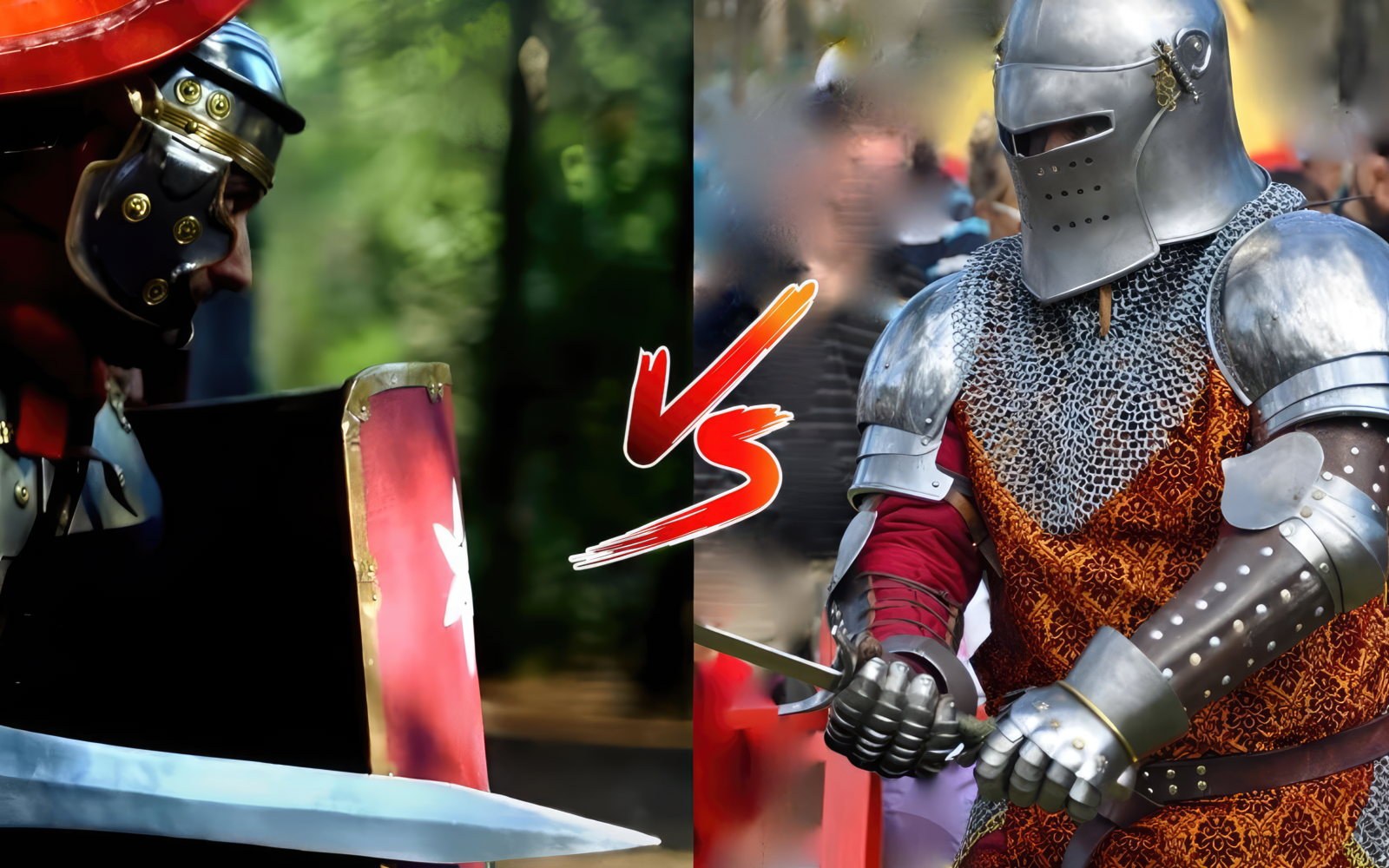
Shortswords and longswords differed in length, size, and weight and were important in European battles. They were not only used in war but also showed the owner’s rank and status.
We’ll cover how shortswords and longswords differ, their designs, historical roles, and how they were used in battle, focusing on what each type excelled at.
Terms, Types, Characteristics, and Design Differences
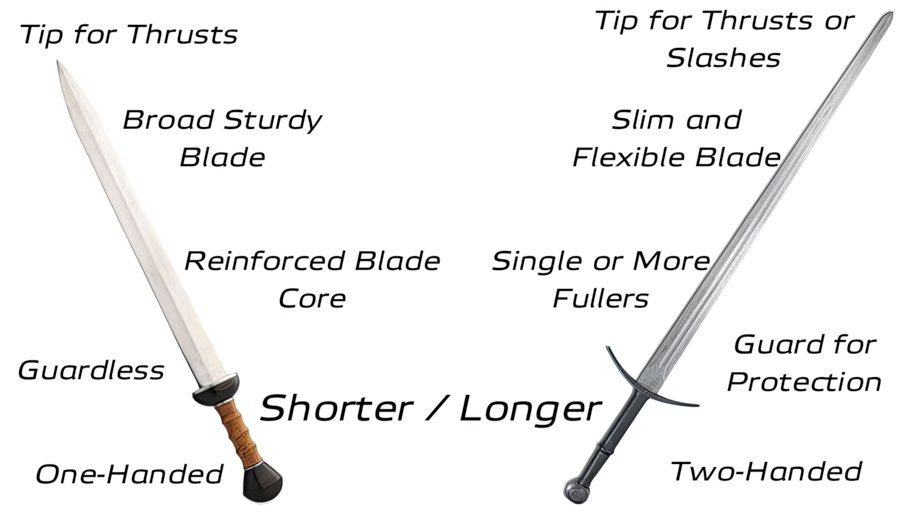
Shortswords have blades up to 25.6 inches (65 cm) long, either single or double-edged. Longswords are larger, over 43.4 inches (110 cm) in length.
The term “longsword” was used for swords longer than the typical medieval arming sword (29.5 to 41.3 inches or 75 to 105 cm). Over time, as swords got bigger, we started calling them simply shortswords or longswords.
For instance, in the late Renaissance (16th/17th century), what used to be normal-sized arming swords were then seen as shortswords, because other swords like the longsword or the zweihander greatsword were much larger.
Types
| Short Swords | Long Swords |
|---|---|
| Gladius | Hand-and-a-Half Sword / Bastard Sword |
| Xiphos | Longsword |
| Kopis / Falcata | Rhomphaia |
| Cinqudea | Rapier |
| Sica | Boar Sword |
| Messer | Messer |
Shortswords come in various shapes: straight, leaf-shaped xiphos, wide and decorative cinquedea, or straight gladius with parallel or tapered sides. Some are curved, like the kopis or falcata, or have a sickle shape, like the sica.
Longswords are often straight, like the bastard sword, but end at a point or are very wide, like the boar sword. Some, like the rapier, are slender and made for stabbing, while others, like the rhomphaia, have a sickle shape.
Some swords, like the European messer, can vary in size from a shortsword to a large two-handed weapon.
Blade

Both short and longswords have blades made of high-carbon steel. Shortswords have thicker, compact blades with reinforced structures, making them strong enough to stab forcefully without breaking.
Longswords need a balance between strength, resilience, and flexibility to strike effectively without breaking.
Both types can have one or two edges. Shortswords often have wider blades that narrow to a sharp point, which is good for stabbing and cutting. Longswords tend to be slimmer, sharpening to a fine point or wider, with a distinct tip for slashing and penetrating armor. Some longswords have a groove (fuller) to make them lighter.




Hilt

Shortswords are usually for one hand, while longswords can be for one or two hands, depending on the size of the hilt.
Shortswords often lack a hand guard because they’re used with a shield. They have designs like finger gaps or a wider hilt for a strong grip.
Two-handed longswords have longer hilts, sometimes graspable at the pommel. They might have a big hand guard, like a crossguard, for protection and different grip styles.
One-handed longswords, like the rapier, feature protected hilts with designs like a swept hilt, a basket, or a large crossguard.
Scabbard & Carriage

Shortswords are easy to carry because of their size. They often have wooden scabbards or leather sheaths and can be worn on the waist, over the shoulder, or tucked into clothing.
Longswords, though longer, can also be worn on the waist, unlike the much larger greatsword. They typically have wooden scabbards for extra protection.
Size and Weight
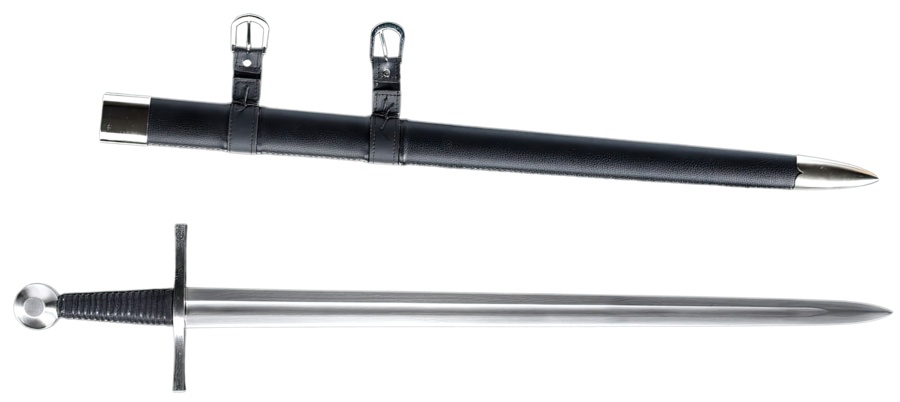
Shortswords are edged weapons up to 25.6 inches (65 cm) long and weigh between 0.66 and 2 lbs (0.3 to 0.9 kg), making them lighter than longswords.
Longswords are longer, over 41.3 inches (105 cm), and vary in shape and size. Their weight ranges from 2.2 to 3.3 lbs (1 to 1.5 kg).
Historical Significance
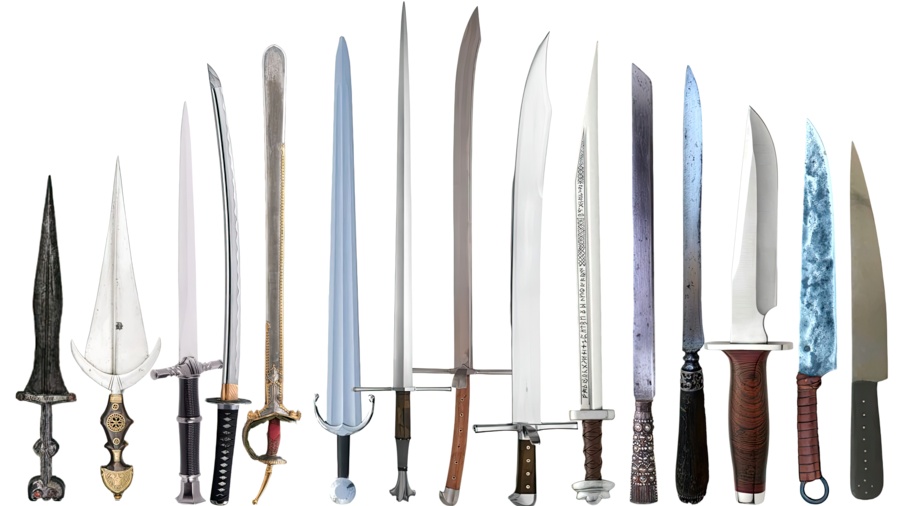
In Europe, the first swords were Bronze Age shortswords, limited by the era’s metalworking skills. These included Celtic blades made from bronze and iron that were used for stabbing.
As ironworking improved, some swords grew to average or even longsword sizes, like the Dacian rhomphaia. However, shortswords like the Iberian falcata, Greek kopis or xiphos, and the Roman gladius played a crucial role in shaping ancient European history. They were key in shield formation tactics, helping overcome longer spears.






In early medieval times, shortswords evolved into larger swords, such as the spatha, Viking sword, and arming sword.
By the end of the Renaissance, as armor became less common, the rapier, a long, one-handed sword perfect for dueling, appeared. Shortswords stayed in use as sidearms or for ceremonial reasons.
Eventually, longswords gave way to greatswords like the zweihander or claymore, which were used for some time before disappearing from use in battle.
Combat Preference
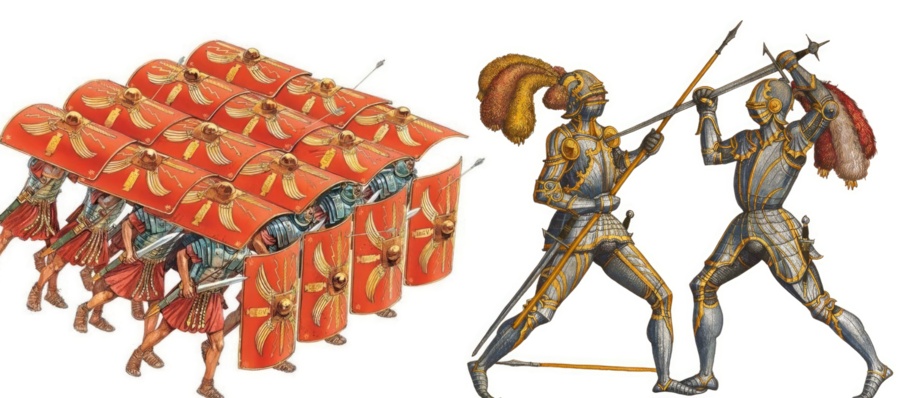
Short swords are easy to carry and simple to use, making them effective for stabbing or slashing. They’re lightweight, making them almost unnoticeable as a sidearm, yet quick to draw for self-defense.
The shortsword pairs well with a large shield, like the Roman legionary’s gladius and scutum, excelling in formations without risking friendly fire and perfect for precise thrusts through gaps in armor.
Longswords offer a reach advantage, allowing users to strike first in combat. They’re excellent for dueling and self-defense and capable of powerful slashes and stabs.
European longswords can be used for half-swording, where the blade is gripped and driven through gaps in armor. They also feature protective guards for safety and flexible grips, with the option for two-handed use for stronger strikes and better control.

